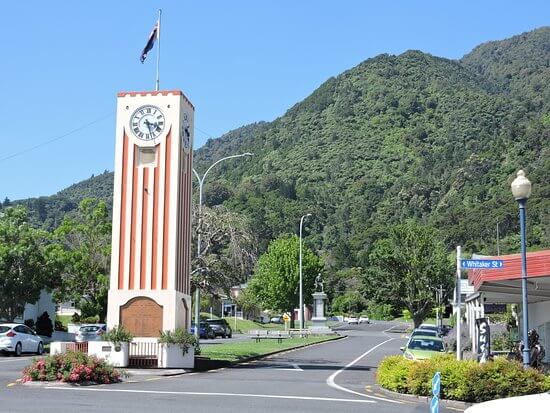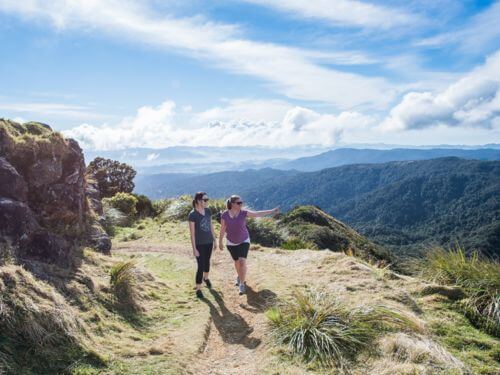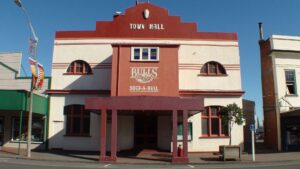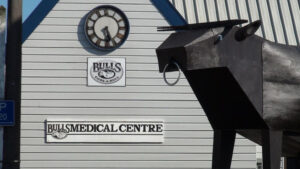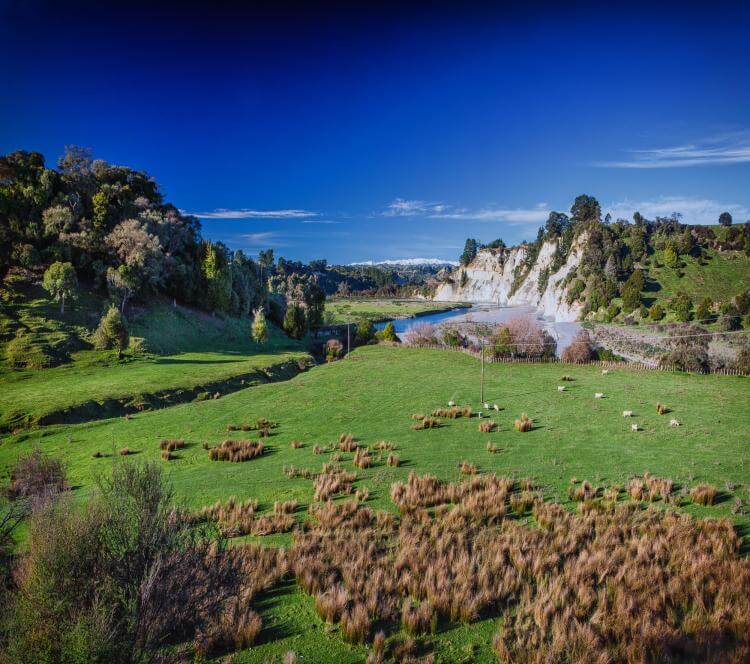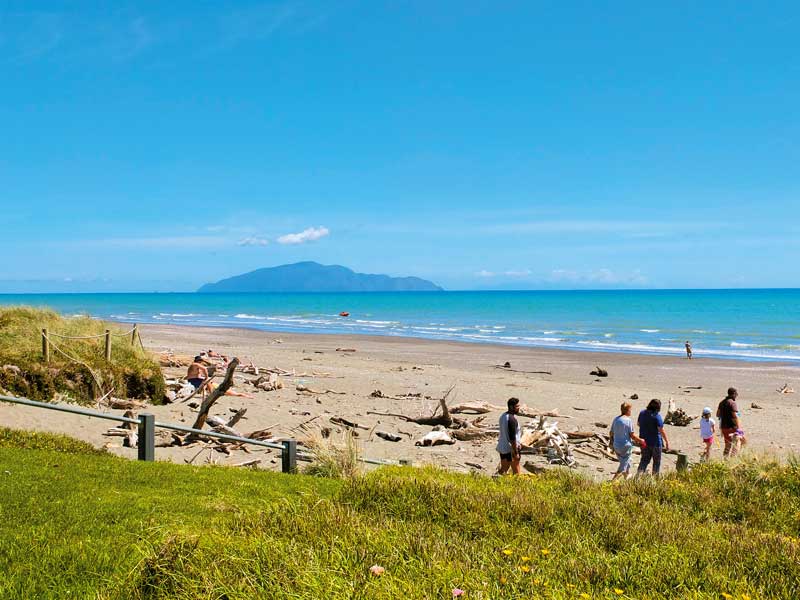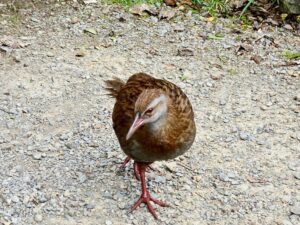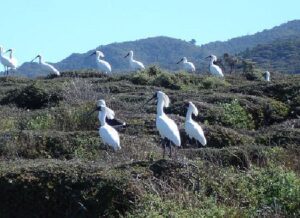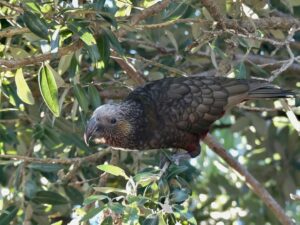In this post, we’ll look at some of those places on the North Island that are often overlooked in favour of more heavily promoted tourist locations.
Our suggestions are all simple diversions from your main route, and every one is worth a stop. They give a far better representation of the kiwi way of life, letting you experience the day-to-day activities of smaller communities.
First up is Dargaville, a town you’ll pass through if you travel up the West Coast of Northland on Route 12 en route to the Bay of Islands.
DARGAVILLE
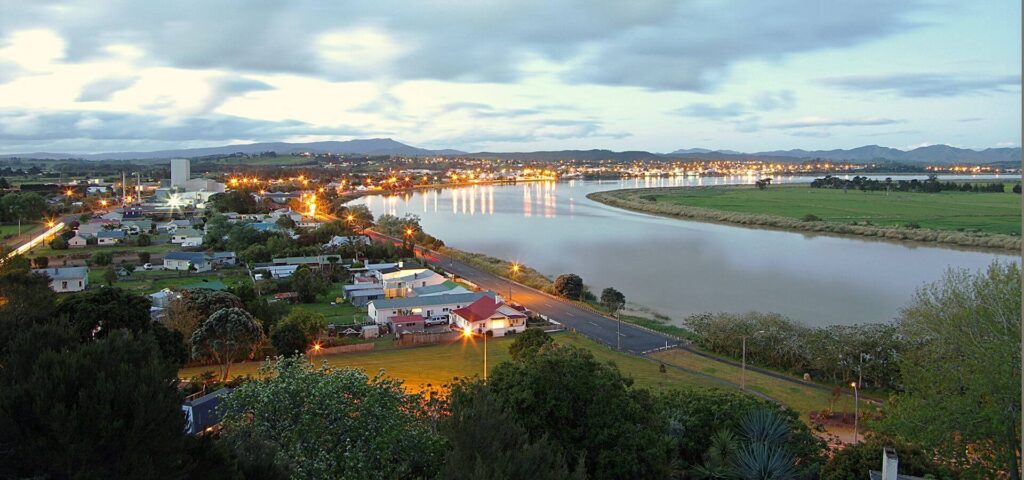
Situated on the bank of the Northern Wairoa River, Dargaville is approximately one hundred miles north of Auckland. It’s one of the chief regions in the country for cultivating kūmara (sweet potato) and is known by many locals as the “Kūmara Capital” of New Zealand.
The town was established in 1872 and named after a timber merchant, Joseph Dargaville, who purchased land from local Maori. The area became known for a thriving industry that included gum digging and kauri logging. This was based mainly at Te Kōpuru, several kilometres south of Dargaville on the banks of the Wairoa River, and the river was used to transport timber to Auckland for use in shipbuilding.
Immigrants from Yugoslavia settled in Dargaville to work in the gum industry, a process which involved the extraction of the gum from the giant Kauri trees, which are a feature of the region. After the gum and forestry industries started to decline after 1920, farming (especially dairy) became a significant contributor to the economy. Our namesake, the Silver Fern Farms meat processing plant, is located on the fringes of the town and currently employs 300 people.
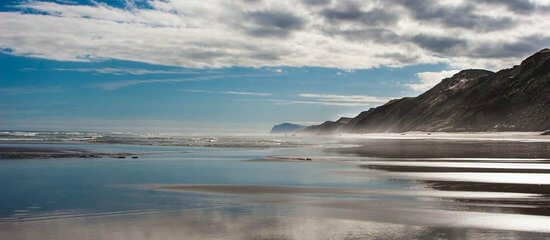
In the early 1800’s the beach was the setting for a major conflict between two Maori tribes during what was known as the Musket Wars.
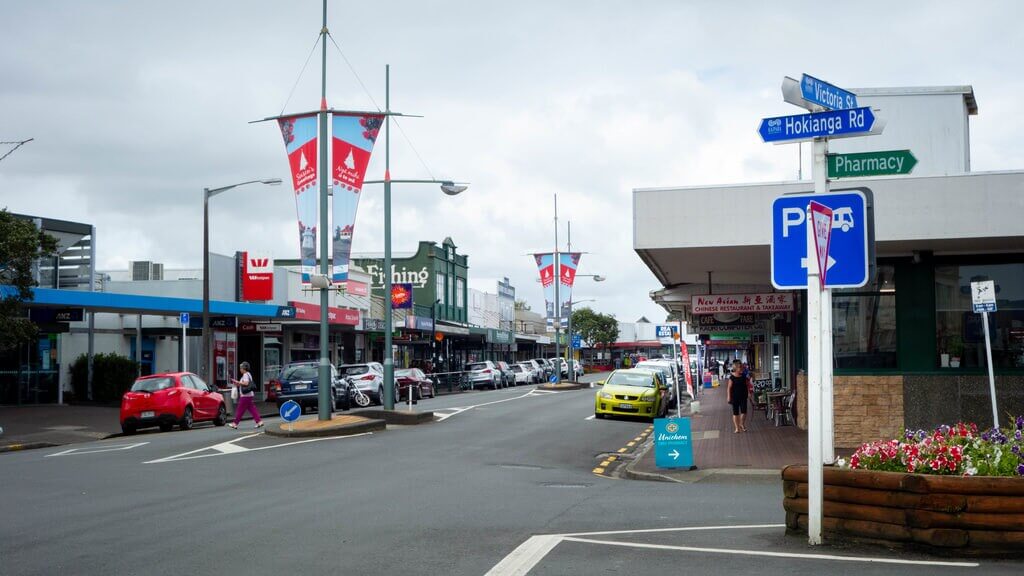
At the last census in 2023, there were 5,000 residents of Dargaville – a town consisting of the usual range of shops on one high street, the Hokianga Road, with the amenities located close by. These include a sports Centre, swimming pool and golf course and cinema.
Some buildings were damaged by Cyclone Gabriel in 2023; the Town Hall was closed and had to be partly demolished because of the damage caused by the cyclone.
On our last visit to the town, we stopped by The Aratapu public library, built in 1874 and now part of the Dargaville museum.
It houses exhibitions of Maori history, early European pioneers, plus industrial and maritime history. Exhibits include a 16-metre-long Māori Waka and a display hall showcasing the history of the Gum diggers. It also has an excellent coffee shop.
There is also a thriving local culture scene, centred on The Dargaville Little Theatre, an amateur theatre company based in the former Mititai Masonic Lodge. In 2022, the Dargaville Little Theatre won the TheatreFest Book of Honour award from Theatre New Zealand for their original musical piece ‘Out of Mind’ in Wellington.
The theatre community also supported the establishment of Circus Kumarani, the longest-running rural community circus. They offer community-based circus and social arts classes for children and adults across the Kaipara and Whangarei regions.
As you can see, Dargaville has plenty of activities which are well worth investigating, and if you are lucky with your timin,g you may even get to enjoy one of the several farming festivals they host throughout the year.
TE AROHA
About an hour and a half from Auckland and forty-five minutes from Hamilton, you can pass through the small township of Te Aroha on your way to Hobbiton.
I once spent an hour waiting for a lift there back in the 80s when hitchhiking was a standard way of getting around. I can’t say I took in much of the scenery because I was too focused on the cars passing by in the hope of someone stopping for me, so it’s a delight to investigate what I missed!
And what I missed was the fact that Te Aroha is famous for having the world’s only hot soda water geyser, Mokena, and associated springs. Prior to the European colonisation of the area, this was a place highly valued by the local Maori, not only for the waters but for its spiritual significance, as they do today.
“Te Aroha” is a Maori phrase meaning “the love” or “the loved one.” The term is famously associated with the New Zealand mountain Mount Te Aroha, the tallest peak in the Kaimai-Mamaku Forest Park. Hiking tracks up Mount Te Aroha begin in the town domain; it takes about 3 hours to reach the summit, with shorter trails available around the base of the mountain.
Other popular trails include those found in the Waiorongomai Valley, a significant gold mining area home to several mining relics and the Wairere Falls Walk, a short drive south-east of the township.
Or grab a bike and ride the Te Aroha to Paeroa section of the Hauraki Rail Trail.
The domain itself offers a picturesque insight into the spa history of the area. The old Edwardian-style building houses a museum, café and the popular natural mineral spas. Pop behind the spa building, and with a little patience, you will see the world’s only natural hot soda water geyser, Mokena Geyser, erupt.
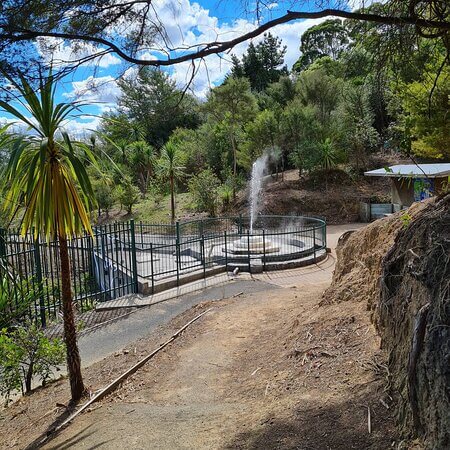
The town is also home to great local cafes, shops and artists and is only a short drive to Hobbiton Movie Set.
BULLS
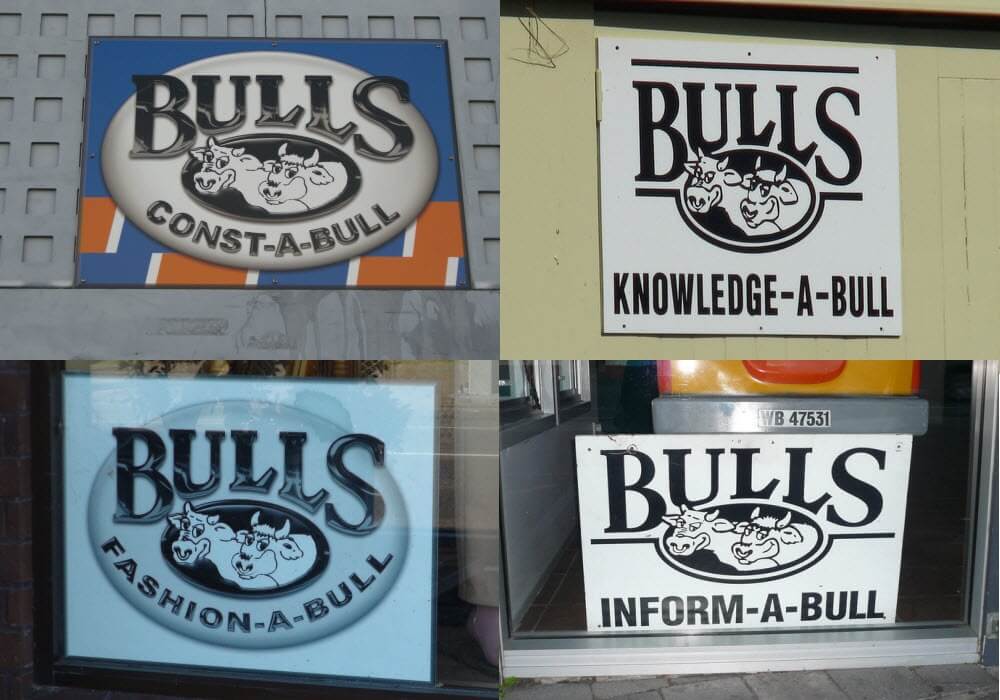
If you’re travelling down from Tongariro National Park to Wellington and you enjoy really cringeworthy puns then you must stop at Bulls, where you’ll see the welcoming sign: “Herd of bulls? It’s a town like no udder.”
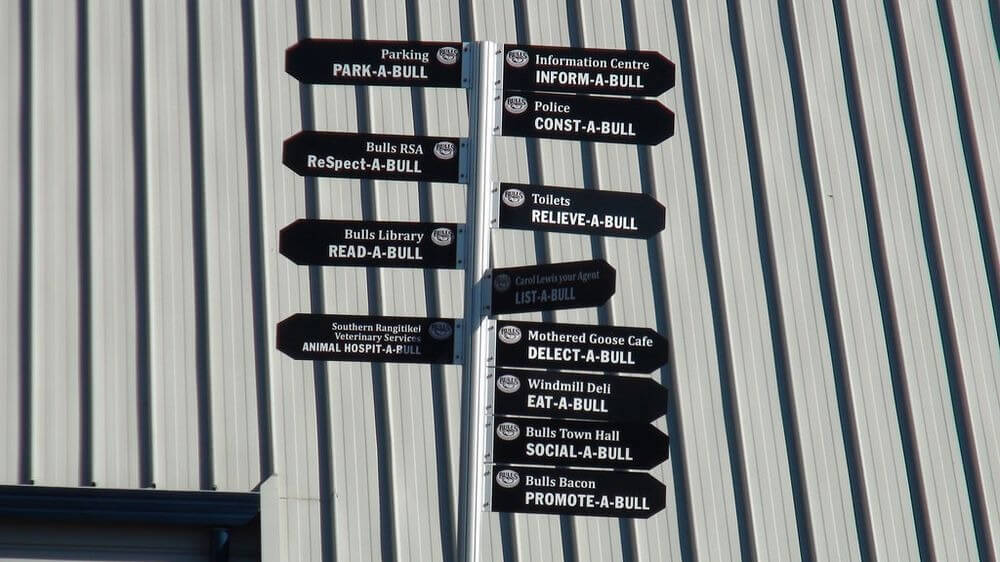
The puns just keep coming and coming until you get irrit-a-bull, for example, if you need a doctor, head to the Bulls medical centre where you’ll find a sign promoting the fact that all your ailments are cure-a-bull. Or if you want a bank, you’ll find the Westpac Bank, where, of course, all your assets are bank-a-bull. Thinking of staying longer? Look for signs for flats that are rent-a-bull.
Had enough? Need a break? Get a bite to eat at the Mothered Goose (Delect-a-Bull), or Subway (Submerge-a-Bull), or Frankies Ice Cream Parlour (Lick-a-Bull) or maybe M&P Young Fruiterers (Veget-a-Bull).
Named after James Bull, an English settler who established the first general store in the town in 1862, you’ll have gathered that Bulls’ residents and businesses have made the most of its name with puns galore.
Every local business, shop and even the town administration plays along with the punning. The police station is called “Const-a-bull” and the church “Forgive-a-bull”. Likewise, the town hall is “Social-a-bull”, the tourist information center “Inform-a-bull”, and all the public loos are “Reliev-a-bull”. The gift shop is “Desire-a-bull”, and a cold store “Freeze-a-bull”. Even its sister city is the cleverly picked Cowes, in England.
The township is home to just over 2,000 people – I imagine many of whom are involved in the “pun” industry, which certainly puts them on the map. It’s close to the Rangitīkei River to the east, with the Tūtaenui Stream also located to the west of the town.
The Rangitikei is a popular leisure and recreation area for jetboating, white water rafting, kayaking and fishing, and includes public campgrounds along its banks. Part of the river was used as the Anduin River in Peter Jackson’s The Lord of the Rings movies.
KAPITI ISLAND
There’s a good chance you’ll just see Kapiti Island off the coast as you travel down the coast road en route to Wellington.
If you want to visit the island – and if you’re a bird lover, it’s a “must” – then you need to book a place with Kapiti Island nature tours. Alternatively, if you’d like the simplicity of having it built-in to your itinerary, here at Silver Fern we can happily include it in your own tailormade tour of New Zealand.
Included in your trip will be a 20-minute return ferry transfer, and if you’re staying overnight, there is accommodation in self-contained cabins, share cabins or glamping tents with meals part of the package.
There are also day trips departing from Paraparaumu Beach and guided tours of six hours duration. If you get the 8.00am boat, you’ve time to see the island, return to shore and complete your drive to Wellington.
There are visitor shelters and toilets on the island. You’ll need to bring your lunch and drinking water, wear sturdy footwear, and warm clothing, including a waterproof jacket.
People have also lived on the island for over 800 years, and their history survives today through the stories and legends told by their ancestors, and through historical sites and artefacts.
Many tribal groups have left their marks on Kapiti Island during a long and colourful history. For instance, from here the famous chief Te Rauparaha controlled his middle NZ empire between the 1830s and 1860s.
Over the last 150 years, Kapiti Island has been home to European interests, including the explorer Captain James Cook, foreign trading ships, and whalers, whose ‘blubber pots’ remain on the island.
In 1897, New Zealand’s Prime Minister Richard Seddon introduced a bill to Parliament to acquire Kapiti Island ‘to conserve the flora and fauna of the Island’.
The island is one of New Zealand’s most accessible nature reserves; a thriving sanctuary, home to rare and endangered native birds, many of which have vanished from the mainland.
If you’re interested in birdwatching, you might be able to cross off an impressive list. Birds you’re likely to encounter include the kākā, a large parrot; the kākāriki, a red-crowned parakeet; and the tīeke (saddleback), a striking wattlebird with a red patch on its back resembling a saddle, among many others. Also, keep an eye out for Takahē, a large flightless bird beloved of New Zealanders because it was once thought to be extinct.
The original forest was dominated by huge rata and podocarps such as matai and miro. Most of these trees were burnt or felled during the mid-nineteenth century to clear the land for farming, but pockets of matai and miro remain in the deep gullies that escaped the fires. Today, as the forest regenerates, much of the island is covered in kohekohe, tawa and kanuka. Some plants, such as karo, have been introduced to provide a valuable food source for nectar-eating birds.
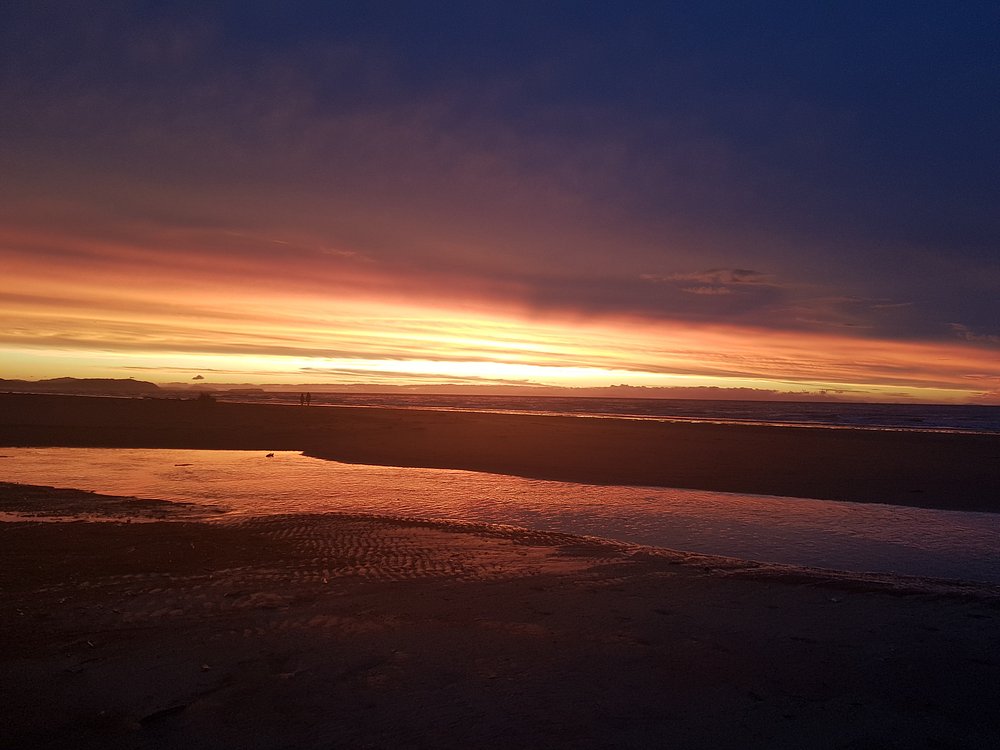
These are just four places on the North Island that we think you’ll enjoy as you travel through the country; of course, there are many other out-of-the-way places that never get a mention in the Tourist Guides. Either through careful planning or serendipity, you may chance on these and gain more insight into what makes New Zealand and New Zealanders tick.
With so much left to explore, next month we’ll look at some more off-the-beaten-track places, this time on the South Island.


